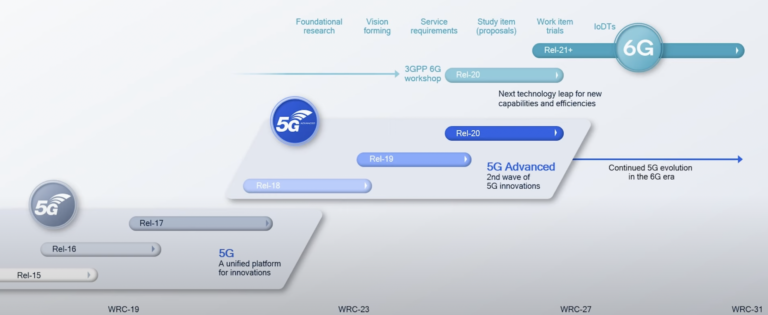As Qualcomm develops foundational 6G technology, we are focused on delivering “maximum impact” on future use cases, sustainability, and network TCO.
Since its founding in 1985, Qualcomm has not only contributed to the development of basic wireless technology, but also utilized its achievements in related global standardization activities. In an interview at the Mobile World Congress in Barcelona, John Smee, Senior Vice President of Engineering and Global Head of Wireless Research, explained his R&D methodology. “Balance is about trying to do the right thing at the right scale.”
Mr Smee continued: “We have to make different bets. There are long moonshots when you try to make the impossible possible. We also have to really work with business teams to do things like IoT, XR, automotive. It’s also important to understand what’s the highest value in terms of priorities, which can make a huge difference to your needs, such as connectivity.” “We’re simultaneously focused on identifying bigger, more complex ideas that can move us forward.”
In the context of 6G and the continued evolution of 5G to 5G-Advanced, Smee called out Qualcomm’s work on Giga-MIMO, RedCap, and support for artificial intelligence across the device, edge, and cloud continuum. I did.
Speaking about the big vision for 6G, Smee looked towards a 2030 rollout date and emphasized the need for technology that is “meaningful and adds value to networks and different types of devices from 2030 to 2040.” . From an application perspective, he cited augmented reality (XR) and his RF sensing to help understand the physical environment. “It’s about looking at future use cases, the energy efficiency and cost efficiency of network operations, and the reality that we have more and more connected devices. It’s about making sure we reach each of these areas to maximum effect.”
The idea of Giga-MIMO extends from Massive MIMO, commonly used for 5G deployments in the mid-band (3.5 GHz), to include thousands of elements to support 6G deployments in upper mid-band frequencies from 7 GHz. The goal is to enable the leap forward to advanced antenna systems. Up to 16GHz. In this paradigm, the upper mid-band acts as a coverage layer for his 6G, facilitating the reuse of 5G massive MIMO sites to provide equivalent coverage.
5G NR-Light Reduced Capability (RedCap) was standardized in 3GPP Release 17. It was designed to support 5G communications for devices that do not require full 5G functionality, such as wearables, industrial IoT sensors, hotspots, and consumer premises equipment. For fixed wireless access (FWA). Last year, Qualcomm announced its Snapdragon X35 modem RF system for RedCap.
RedCap is currently “expanding into other types of products.” [enhanced mobile broadband] use cases,” Smee said. This includes his FWA. “As we look at bridging the digital divide in more economies, in more markets, we’re seeing a very interesting value strategy of bringing connectivity to more people, and hundreds of megabits per second is a lot more. That’s an excellent data rate for these kinds of applications.” When it comes to IoT, he said, RedCap “opens up new service possibilities” in areas such as logistics and tracking, and more generally for network-connected applications. He also talked about accommodating the amount of devices.
Regarding AI, during MWC Qualcomm and OEM partners showcased on-device generated AI enabled by the Snapdragon 8 Gen 3 mobile platform. But it’s just one touchpoint in an AI continuum that spans device, edge, and cloud. On the path to 6G, “We’re designing the next generation of wireless, and it’s about recognizing that we’re going to have much more computing power than we had before.” Whether it’s language models or other advanced AI techniques, there are many ways to leverage it. ”
Adding intelligence to devices, the edge, and the cloud also leads to the idea of adding more intelligence to the air interface that wirelessly links it all. “For example, AI could be built natively into the 6G standard,” he says. In the real world, it improves predictive capabilities and reduces the amount of overhead in exchanging information across the network.
“We’re looking not only at combining Qualcomm’s amazing hardware and software capabilities, but also at air interface wireless innovations, and thinking, ‘We can combine these in very interesting ways.’ This is a really exciting field and a great example of a technology vector that is advancing really rapidly. ”
Read below to learn more about Qualcomm’s advanced wireless research and development.
- How can carriers benefit from digital twin networks? (link pending)
- Ozge Koimen’s millimeter wave article, wait for link
- Giga-MIMO is the foundation of wide area 6G and preserves the link
- John Kuzin 5G-A, 6G spectrum article, wait for link
- Improve vehicle safety and experience with cloud/connectivity combo, long press to link
- Enabling Boundless XR with Dynamic Distributed Computing, Pending for Linking


